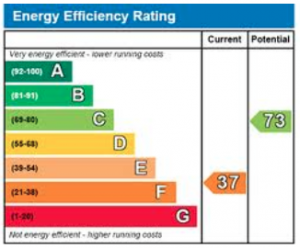February 2016

Minimum Energy Efficiency Standards: Impact On Owner-Occupiers
New regulations published
The proposed regulations for the new Minimum Energy Efficiency Standards (MEES) were published in February 2015 and set out the implementation of the Energy Performance Certificate (EPC) sanction due to come into force in 2018.
The numbers of affected buildings is not yet known but it is fair to assume that it will include many built between the 1950’s and 1980’s – before energy performance became a priority.

How MEES works
The regulations are aimed at the letting market and so from April 2018 it will not be possible to grant a new lease on a commercial property with an Energy Performance Certificate rating of ‘F’ or ‘G’. The potential loss of income together with the fines that can be imposed by Trading Standards will make compliance unavoidable for landlords.
Impact on owner-occupiers
At first glance therefore an owner-occupier could assume that the new regulations will not affect them. Reality may prove different.
Exit strategies
Most owner-occupiers invest in real estate for its return as an investment and ultimately will have some form of exit strategy in mind. Perhaps a sale as a going concern, or a winding-up disposal, or possibly selling out to fellow shareholders or partners. In principle, this would seem unrelated to the effect of MEES, but other factors might come into play.
Funding problems
It is likely that funders will be concerned to avoid any exposure to MEES in terms of effect on the security value. A restriction on the ability to be let may be seen as having a direct impact on the residual security value.
Professional valuations
Any disposal will need a value to be fixed at that point in time and the RICS has been making valuers aware of the need to cover the MEES issue in their reports and caveat the possible effects.
Exit value issues
Accordingly in a sale, although there may be no current intention to let the property, MEES will restrict its future market and, ultimately there will be a long stop for all property to have to comply.
The combined effect of any restrictive lending policies and an adverse comment in a valuation report will thus mean that an owner-occupier disposal may not be plain sailing.
Negotiated outcomes
Where fellow directors or partners are buying out a retiring colleague they could reasonably feel there is a liability that should be shared and may influence the negotiation.
For an affected building, any potential arms-length purchaser is likely to be advised to seek a price reduction of at least the cost of the works, plus loss of income and inconvenience.
The future starts here
The majority of commercial buildings still do not have an EPC rating, and in a long term ownership there is no reason to have one carried out. It must therefore make sense to find out if a building is affected.
A well-qualified EPC assessor (an RICS member is a good benchmark) can provide an initial assessment without issuing the formal report. This can indicate the current rating if an EPC were issued. If the building will be affected, the assessor will offer a road map of alternative ways to improve the rating.
Availability of tax reliefs
It is highly likely that most, if not the entire cost of energy performance upgrades, will be tax relieved, either under the heading of Capital Allowances and the associated Enhanced Capital Allowances scheme, or as revenue expenditure where functional like-for- like replacements take place.
Annual Investment Allowance
For each year until 2020, a taxpayer incurring expenditure on plant & machinery will have an AIA of £200,000 enabling that amount to be set against tax in the current year rather than being written down over time.
Benefits of an upstream approach
If an EPC-rating problem is identified today, perhaps some years before a possible disposal, there is ample time to undertake any work and minimise disruption to the ongoing business.
It also means tax and energy savings for the period from now until the future sale – the combined value or which can significantly reduce the cost of the required improvement works.
Will the legislation change again?
As with all government measures there is a possibility delay in implementation, or alternatively, the risk of the sanction being raised to a higher EPC level. Nothing has yet, however, been said by the administration to indicate there is a lack of resolve to achieve carbon reduction targets.
Meanwhile Building Regulations standards for required energy performance have steadily increased, widening the quality gap between older and new, or refurbished assets.
A changing market?
A growing awareness amongst occupiers that poor energy performance is an avoidable business cost will in time reinforce prejudice against older unmodernised assets.
A low rental may not in itself achieve a let. Hence where an owner-occupier sells an asset, any purchaser is likely to be conscious of minimising risk exposure in an increasingly energy-conscious property market. Unless it is virtually certain that a building will be demolished after disposal, then expenditure on maintenance and improvement will generally help protect the value of an owner-occupied asset.
To continue this discussion, Jerrard Keats and Wolley are here to support. Contact Jon on 01202 744990 or jon@jkwproperty.co.uk You can be assured that the advice you receive is from someone who has helped make actions, not just formed an opinion. We look forward to hearing from you.


